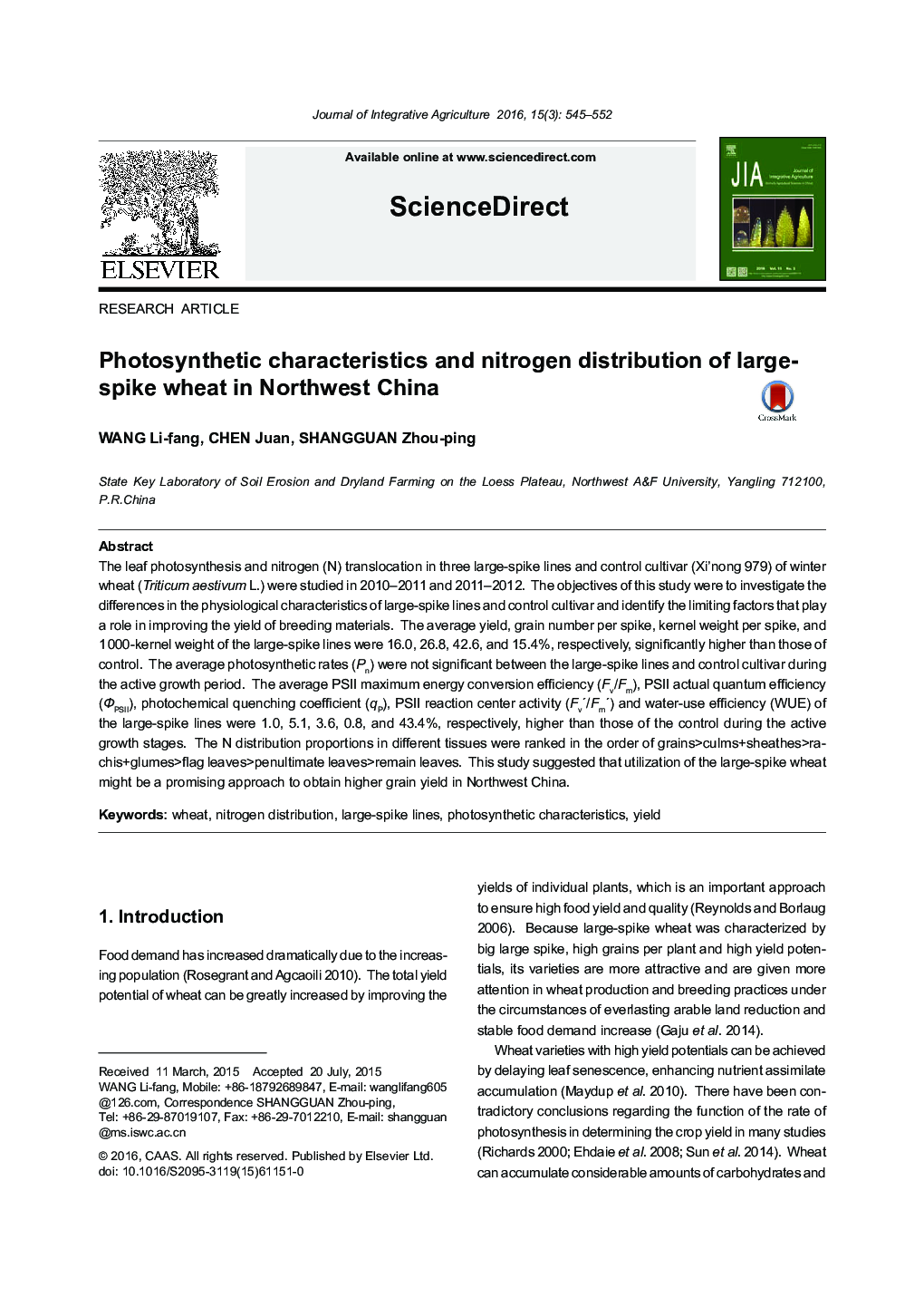| Article ID | Journal | Published Year | Pages | File Type |
|---|---|---|---|---|
| 10180022 | Journal of Integrative Agriculture | 2016 | 8 Pages |
Abstract
The leaf photosynthesis and nitrogen (N) translocation in three large-spike lines and control cultivar (Xi'nong 979) of winter wheat (Triticum aestivum L.) were studied in 2010-2011 and 2011-2012. The objectives of this study were to investigate the differences in the physiological characteristics of large-spike lines and control cultivar and identify the limiting factors that play a role in improving the yield of breeding materials. The average yield, grain number per spike, kernel weight per spike, and 1000-kernel weight of the large-spike lines were 16.0, 26.8, 42.6, and 15.4%, respectively, significantly higher than those of control. The average photosynthetic rates (Pn) were not significant between the large-spike lines and control cultivar during the active growth period. The average PSII maximum energy conversion efficiency (Fv/Fm), PSII actual quantum efficiency (ΦPS??), photochemical quenching coefficient (qP), PSII reaction center activity (Fv'/Fv') and water-use efficiency (WUE) of the large-spike lines were 1.0, 5.1, 3.6, 0.8, and 43.4%, respectively, higher than those of the control during the active growth stages. The N distribution proportions in different tissues were ranked in the order of grains
Related Topics
Life Sciences
Agricultural and Biological Sciences
Agricultural and Biological Sciences (General)
Authors
WANG Li-fang, CHEN Juan, SHANGGUAN Zhou-ping,
